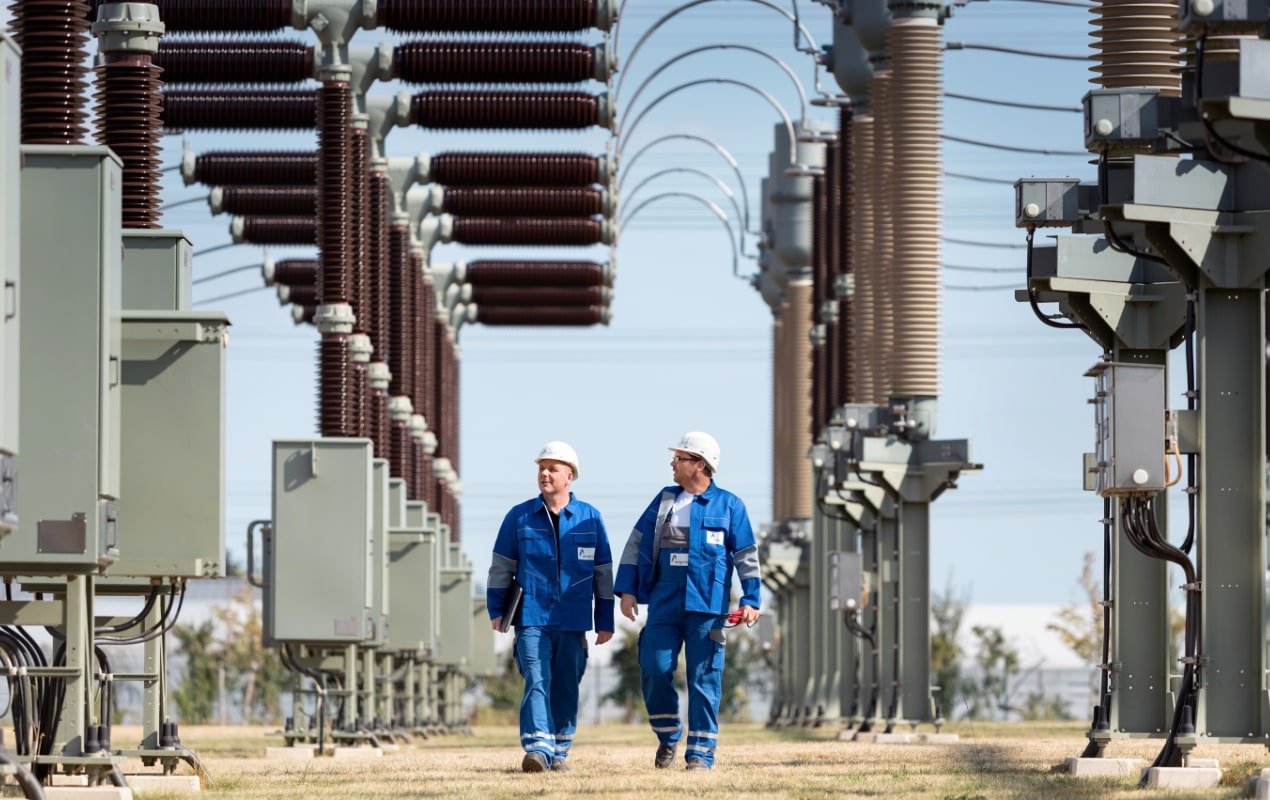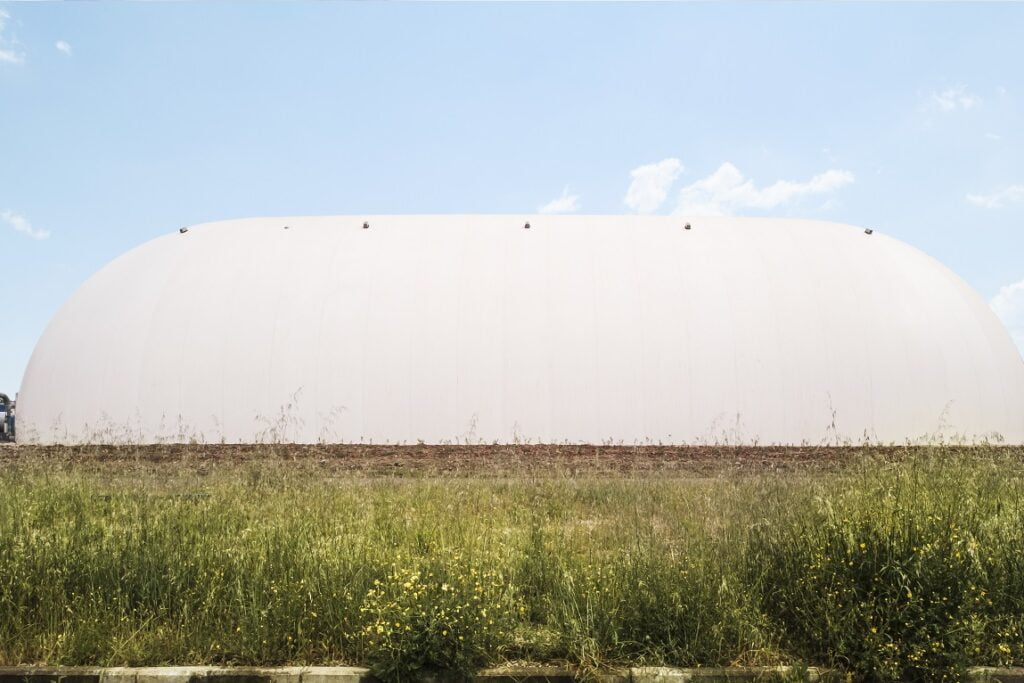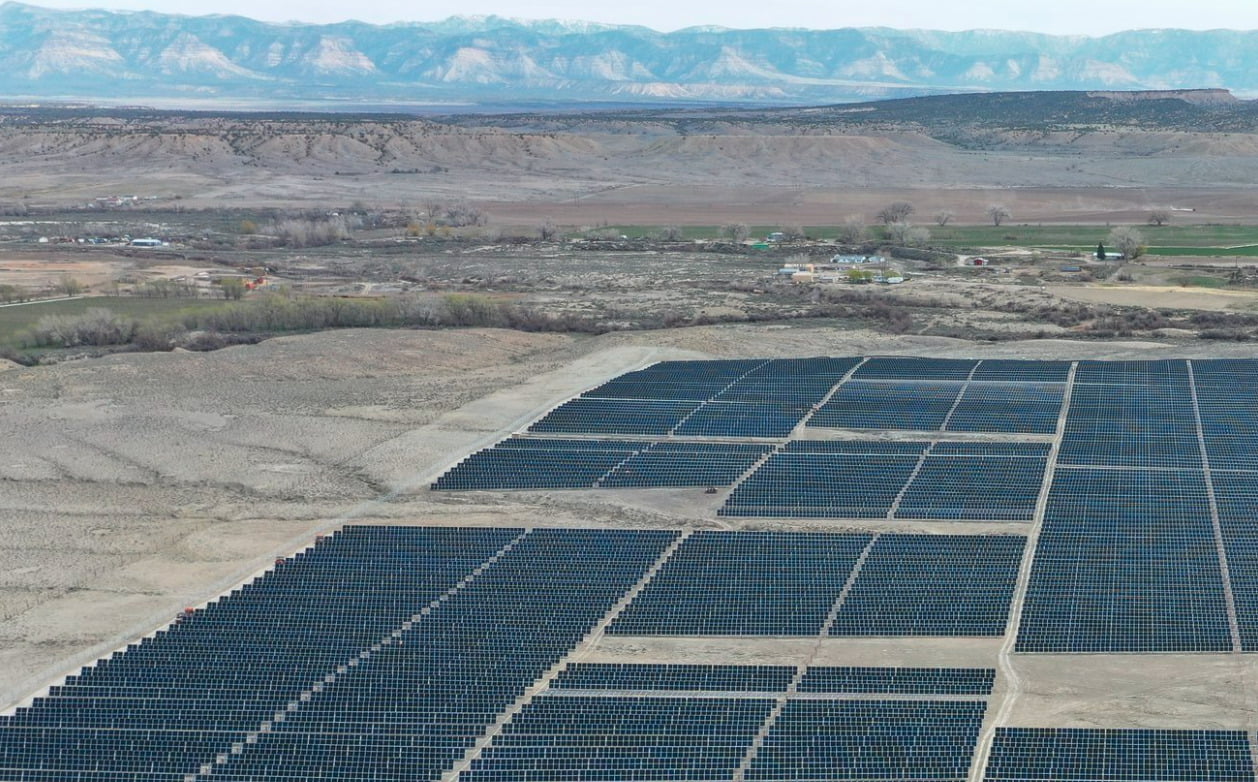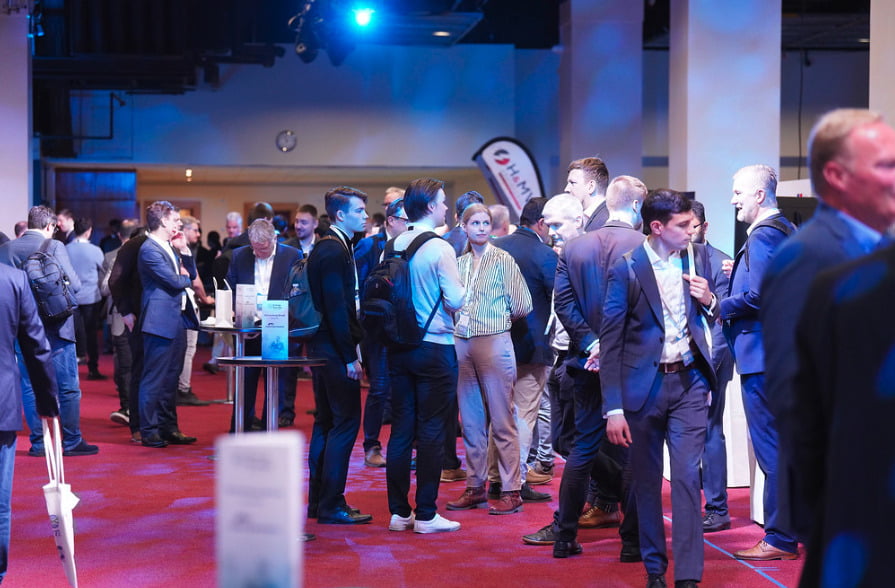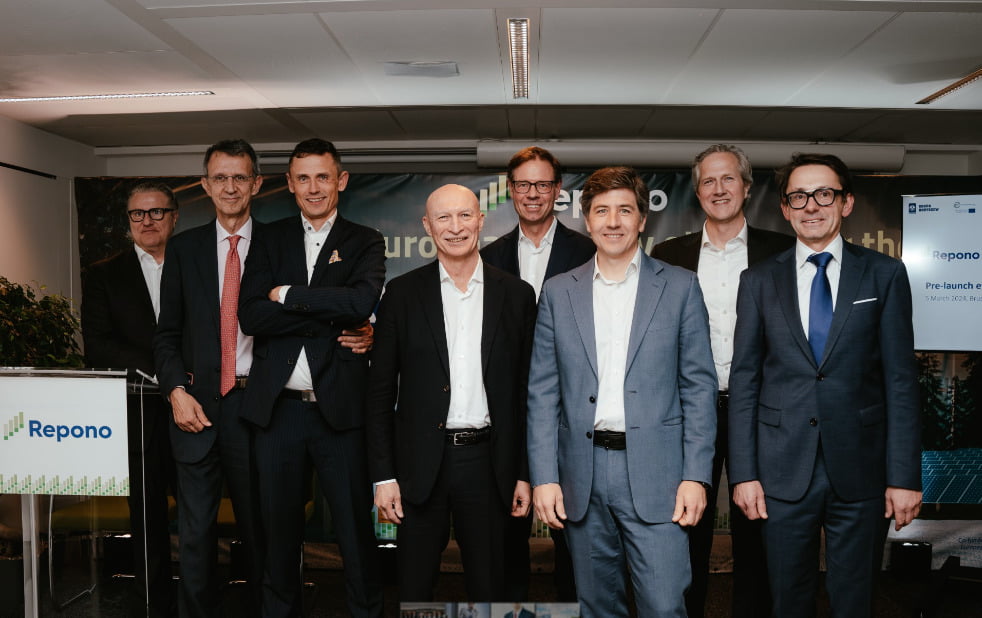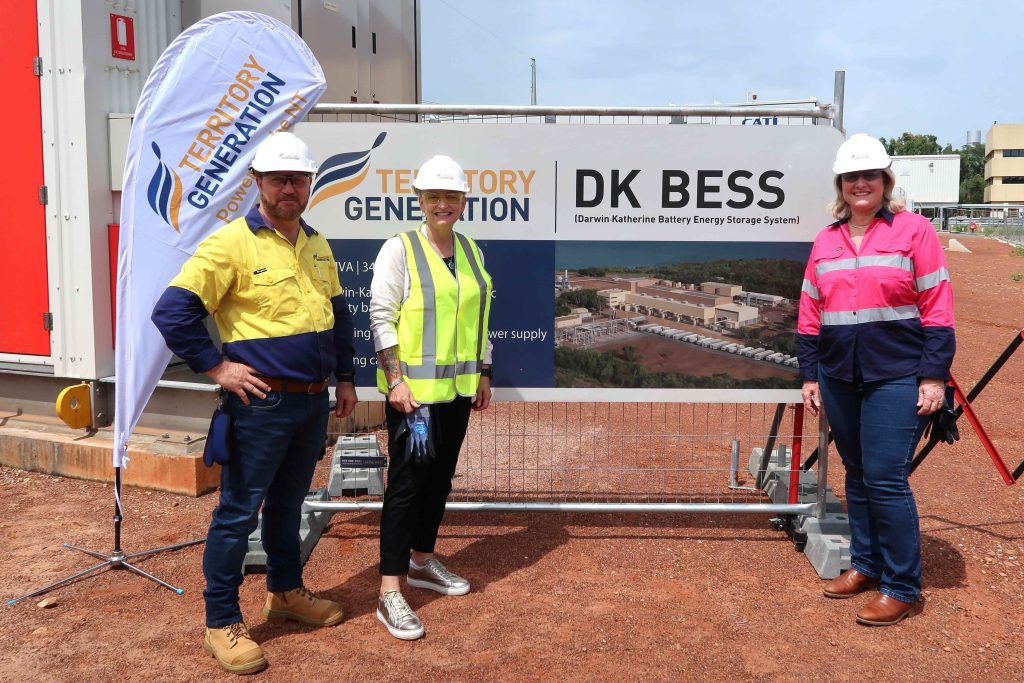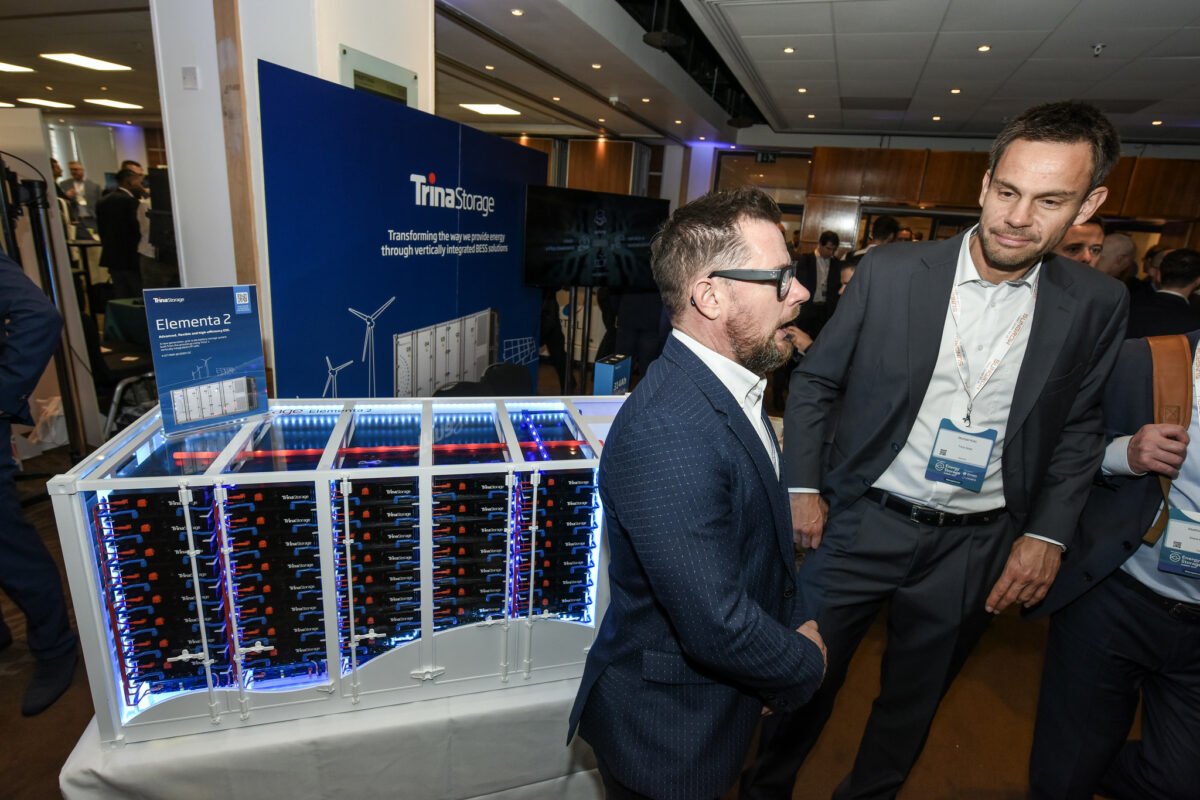The remaining US$2.2 billion comes directly from the Electric Infrastructure programme, primarily for transmission and distribution (T&D) investments across 39 projects in 21 states.
However, the USDA expects to continue making awards under PACE in the coming months.
Of the five winning PACE projects, three are solar-only, one involves solar and storage, and one is energy storage only.
The latter is a US$83.5 million initiative by the Trico Electric Cooperative Inc. in Arizona to expand its battery energy storage system (BESS) capacity to help provide reliable power to the growing number of people living around Tucson and the Pascua Yaqui Reservation. The co-operative utility is aiming to halve its carbon emissions by 2032.
In Nebraska, Midwest Electric Cooperative Corporation is looking to put US$17 million into financing solar and energy storage facilities in communities in Wallace, Grant, Paxton and Lakeview.
The three solar-only projects are in Colorado (US$13.4 million for La Plata Electric Association’s to increase solar energy delivery to its members), Hawaii (US$24.4 million for Kauai Island Utility Cooperative to expand solar production), and Nebraska (US$1 million for a solar facility for the Winnebago Tribe).
The funding programmes are part of the US$369 billion US Inflation Reduction Act, signed into law in August 2022 and effective 1 January 2023. The package includes direct grant funding such as PACE (and others for clean energy manufacturing, including batteries and long-duration energy storage or LDES) and tax-based incentives for upstream and downstream clean energy to increase funding for the green energy transition.
Energy-Storage.news’ publisher Solar Media will host the 5th Energy Storage Summit USA, 19-20 March 2024 in Austin, Texas. Featuring a packed programme of panels, presentations and fireside chats from industry leaders focusing on accelerating the market for energy storage across the country. For more information, go to the website.
Regulator in Germany approves TSO Amprion’s decentralised grid booster BESS
Amprion, one of four TSOs in Germany, first announced plans to deploy ‘decentralised’ grid booster BESS projects across its network in May last year. The grid booster programme in Germany was launched in 2019, and involves the TSOs deploying large-scale battery energy storage system (BESS) at critical nodes to stabilise the grid, reduce interventions and reduce system costs.
“Grid boosters are an innovative tool of grid operators to better utilise their existing power lines by used large batteries as an airbag for the power grid. In case there is a failure on the grid, the batteries will stabilise it instantly and thereby allow the grid to be operated at a higher utilisation to begin with,” Stephan said in his post.
Amprion’s projects will be built at the 110kV level of the electricity network in Bavaria-Swabia and the Rhineland. When it announced them last year it claimed they were the first such Grid Booster projects anywhere to be done at the smaller-scale.
Fluence itself is building grid boosters in Germany, 200MW for TSO TenneT, across two sites, and a single-site 250MW system for TSO TransnetBW.
In his post, Stephan explained that the calculations underlying the latest approval were arrived at in a different way to how they were previously done. Before, the TSOs and the regulator would run their cost-benefit analysis and come up with different results, sometimes leading to grid booster projects being declined.
This time, the regulator agreed to approve the projects “as long as the grid booster functionality is not more expensive than the benefit it creates in terms of congestion relief”.
The “functionality” of the projects have been set at €318 million (US$346 million) for Bavaria-Swabia and €275 million (US$300 million) for Rhineland’s, and Amprion will now figure out what the costs of the assets are and what additional market-based values can be added to them. Amprion has started a market consultation for the projects, which it hopes to have online by 2026.
Alongside Germany, grid booster projects are also being deployed in New Mexico (USA), Latvia, Lithuania and Brazil, while some are eyeing up the technology as a potential new area for energy storage to play in the UK market.
In general, TSOs are not permitted to own energy storage assets. However, direct TSO ownership of the BESS is in principle possible in Germany, Stephan added, and direct ownership was deemed the most cost-effective option compared to third-party ownership.
See Lars Stephan’s full Linkedin post here and read the full latest NEP here.
Energy Dome: Tolling the CO2 Battery ‘with investment grade off-takers’
Energy Dome’s Ben Potter is speaking with Energy-Storage.news at the Energy Storage Summit EU about the Italy-headquartered startup’s business models.
Our in-person interview comes exactly a year after the previous one and takes place at the same event. But whereas our conversation in early 2023 focused largely on the technology underlying Energy Dome’s CO2 Battery, this time out, attention turns to how the CO2 Battery will participate in the market.
To give the briefest of recaps, the CO2 Battery is the brainchild of Claudio Spadacini, an entrepreneur who combined turbines, compressors, and thermodynamics with relatively small amounts of carbon dioxide as the storage medium.
Carbon dioxide (CO2) is adiabatically compressed and then liquefied to charge with energy. The gas is then evaporated as the system discharges, with heat created during the compression process also stored and then used to expand the gas. The CO2 is driven through turbines, generating electricity.
The company claims that the CO2 Battery is able to provide long-duration energy storage (LDES) cost competitively and can be made relatively easily, due to its use of off-the-shelf components and manufacturing and engineering techniques from existing industries. It also experiences no degradation in the way lithium-ion batteries do at the cell level, Energy Dome says.
Late last year, the company closed financing for its initial first-of-a-kind 20MW/200MWh project in Sardinia, Italy, where the first megawatt-scale demonstration project was also built a couple of years back. According to Potter, it will be the first of many standardised units that basically look identical, including a project in Wisconsin, US, with utility Alliant Energy, also 20MW with 10-hour duration that is being supported with funding from the government Department of Energy (DOE) as one of a number of long-duration energy storage (LDES) large-scale pilots.
Long-term revenues for provider, market upside for customer
In the past year, Energy Dome has added a build, own, and operate (BOO) side to its business, alongside the existing business model of producing and selling CO2 Battery systems as an original equipment manufacturer (OEM).
Potter says the new BOO division which he leads as its chief commercial officer (CCO) will “develop, fund, build and operate assets for our customers, which enter into long-term agreements”.
“There are customers who more naturally fit into an OEM direct equipment purchase or supply arrangement, and there are customers who actually don’t want to incur the capex themselves, and prefer just to shift their capex to opex and enter a long-term lease type agreement,” Potter says.
“So those kinds of customers want capacity, they want availability and the guarantees associated with it, but they don’t necessarily want to have that asset on their balance sheet.”
Potter claims it to be a simple business model, where the provider takes the technology risk of deploying a new technology into the market, but the customer bears the market risk. What that means is that Energy Dome will enter a long-term tolling agreement for a fixed dollar amount per megawatt, per month, over a 20-year term.
“We provide the CO2 Battery, we provide the long-duration energy storage. We operate it for the customer, so we charge, and we discharge, but they’re responsible for dispatch optimisation. So they’re responsible for sourcing the energy, and then they’re responsible for trading it and actually deploying it into the market.”
A few weeks ago, Energy-Storage.news Premium spoke with Jon Norman, president of Canadian advanced compressed air energy storage (A-CAES) provider Hydrostor. Hydrostor has also moved into developing projects that will use its own proprietary technology as well as selling the solution.
The two may not be directly comparable given the multiple gigawatt-hours in scale for each of Hydrostor’s projects, but in both cases the provider has taken on the technology risk, with the help of some high profile investors.
New tech leaning on familiar strategies
As mentioned above, the Energy Dome tech is designed using familiar components and technologies from existing industries, and in a way, the new BOO division works along the same lines.
Fairly obvious where the name comes from. Image: Energy Dome.
Tolling structures are very common in the infrastructure industry and are what makes the CO2 Battery bankable because it enables a long-term fixed revenue for Energy Dome from investment grade off-takers that could include investor-owned utilities (IOUs) or large independent power producers (IPPs).
That bankability, “allows us to speak to infrastructure funds, private equity firms, etc., to be able to raise capital to deploy it into those projects,” with the company seeking co-investors to raise funding.
Those types of tolling model are common not just in infrastructure, but in “traditional power” contracts too – thermal generation assets like combined cycle gas turbines (CCGTs), but also pumped hydro energy storage (PHES) assets as well.
It’s a “natural leap” that the customer is very comfortable with, Ben Potter claims, because the CO2 Battery operates in a very similar way to PHES, while the components are similar to technologies more commonly used in thermal generation.
“The customer gets a long-duration energy storage asset that doesn’t degrade and gets performance guarantees and availability guarantees. So they have confidence on when they’re going to be able to charge and discharge and get the power back.
“Basically, it depends on the market where they’re in, but if you take a vertically integrated utility, for instance, those utilities want buffering, they want an asset like this in their portfolio, which allows them to decarbonise, but just on a normal unit-by-unit basis.”
There are also tolling agreements in the lithium-ion (Li-ion) battery energy storage system (BESS) space, most commonly in Southwestern and Southern parts of the US.
That enables Energy Dome to model like-for-like comparisons with its own offerings, and Potter claims the CO2 Battery stacks “very, very favourably” against the popular encumbent in that respect.
This is, he says, “because we don’t have to augment the power, so after 10 years, you don’t have to repower it and replace lithium-ion cells, because our components don’t degrade, the economics stack very, very favourably”.
India: JSW Renew Energy Five signs PPA for first of two 250MW/500MWh BESS projects
Government-owned SECI is expected to start receiving the agreed power supply within 18 months.
The remaining 100MW/200MWh will be managed by JSW Energy Limited.
This project forms part of a pair that JSE Renew Energy Five successfully bid for at the beginning of last year during SECI’s pilot tender for two equally sized BESS projects totalling 500MW/1,000MWh.
These are to be installed at adjacent sites, connected to India’s Inter-State Transmission System via a substation in Fatehgarh, Uttar Pradesh.
As reported by Energy-Storage.news the tender proved popular with 10 hours of bidding reported before the subsidiary of Indian conglomerate JSW Group won with a reverse auction bid of INR1,083,500 (US$13,590 at the time) per megawatt.
JSW Energy has reported a “locked-in” energy storage capacity of 3.4GWh in India, split between battery energy storage and pumped hydro as it works towards its target of 40GWh of storage capacity before 2030.
Energy-Storage.news’ publisher Solar Media will host the 2nd Energy Storage Summit Asia, 9-10 July 2024 in Singapore. The event will help give clarity on this nascent, yet quickly growing market, bringing together a community of credible independent generators, policymakers, banks, funds, off-takers and technology providers. For more information, go to the website.
PacifiCorp and rPlus quadruple Utah BESS project planned size to 1,600MWh
The project will start construction in Q2 2024 and will now feature a 1,600MWh battery energy storage system (BESS) alongside 400MW of solar PV. Previous announcements about the size of the solar and BESS indicate the new size is 400MW/1,600MWh, a 4-hour duration system.
At 1,600MWh it would be one of the largest BESS units in the US and, by extension, the world – the current largest is at the Edwards Sanborn solar-plus-storage facility in California which came online in January.
Green River Energy Center is the seventh largest solar-plus-storage project under development in the US according to trade body American Clean Power figures cited by rPlus. It is the third PPA between rPLus and PacifiCorp, with the utility aiming to have 7.4GW of energy storage in its network by 2029.
rPlus aims to bring the Utah solar-plus-storage project, which will require US$1 billion of capital investment, to the market for tax and debt financing later this year. Read about recent tax equity investment deals for energy storage here.
The company, through its subsidiary rPlus Hydro, is also active in developing pumped hydro energy storage (PHES) projects including in both Wyoming and Utah.
Utah has been relatively quiet compared to other states around it for downstream energy storage deployments, though it is the site of one of the largest green hydrogen projects in the world as well as the state where system integrator Fluence is launching US manufacturing of BESS.
Energy-Storage.news’ publisher Solar Media will host the 5th Energy Storage Summit USA, 19-20 March 2024 in Austin, Texas. Featuring a packed programme of panels, presentations and fireside chats from industry leaders focusing on accelerating the market for energy storage across the country. For more information, go to the website.
Provider Merus and customer Ardian talk 40MWh Finland BESS project: ‘negotiations have to move with the market’
BESS pricing moves
The deal for a 38MW/40MWh system to be deployed in Lappeenranta was announced in early February, with the project owned by a joint venture between Ardian and utility Lappeenrannan Energia.
The announcement followed a period of sustained decline in the global price of BESS, according to data from Clean Energy Associates, with the fall particularly sharp from October 2023 to January 2024.
We ask Ovaskainen and Lumijärvi how this price trajectory affected the timing of the deal, which was said to be worth €15 million (US$16 million) for Merus Power, which is providing turnkey delivery of the BESS.
“We did numerous iterations on the price and ended up somewhere else from where we started. Of course, we have to follow up on where the market is so everyone gets a fair piece of the cake,” Ovaskainen says.
“The market moves, so the negotiations need to react to that, but I think we found a good balance in the end,” Lumijärvi adds.
Ovaskainen emphasises that Merus’ turnkey deliveries also include all grid compliance tests and technical acceptance tests required for commissioning a project.
Merus Power buys its BESS units and battery management systems (BMS) from existing suppliers but manufactures everything around it, including power conversion system (PCS) and energy management systems (EMS).
Project also includes grid-forming-capable inverters
Like other projects Energy-Storage.news has reported on recently – one project in Australia and another project in Scotland – the BESS will have grid-forming capabilities through specialised inverters.
“This is a new regulation that has come in only very recently in Finland by the Finnish TSO Fingrid, and it’s now valid for systems of this size. It will be one of the first to support the grid in this way,” Ovaskainen says.
“It is partially about artificial inertia, but ultimately it’s about how the system must react to sudden electrical phenomena in the network so that it reacts in a similar way to turbine-based generation. In Finland, there is a big pipeline of wind and power and the TSO is worried about the inertia and a lot of power electronic interfaced generation in the grid. So energy storage requirements are getting stricter so that it supports the grid in all situations.”
Deal timing for Ardian and wider energy storage plans
The project is the first energy storage investment of scale for Ardian, one of the world’s largest private equity investors, so is highly significant even if it’s not huge in investment size, Lumijärvi says.
“On timing, the prices in Finland’s frequency control markets are really high, and the regulations are changing with hydropower being squeezed out and renewables coming in, which creates a need for these batteries,” he said.
“But everyone is indicating market saturation for frequency control moving forward, so in one sense, it’s a race against time to bring batteries online to capture those revenues.”
Lumijärvi said eNordic/Ardian are looking at additional ‘very concrete opportunities’ for projects in Finland as well as Sweden. “This won’t be the only battery investment for us in the Nordic countries.”
Choice of 1-hour system as other players move to 2-hours
Off the back of that market saturation point, we then asked Lumijärvi why eNordic/Ardian opted for a 1-hour system and whether there was optionality around increasing its MWh capacity at a later date.
Energy-Storage.news recently heard from optimiser Capalo AI that the sector in Finland was moving to 2-hours due to changing revenues and regulations, exemplified by a 2-hour, 112.9MWh project which IPP Neoen started building in January, Finland’s largest.
“Maybe in the future, the arbitrage will have a bigger role than it currently has, though I won’t disclose exactly what we think of this. Our analysis landed on a 1-hour battery,” Lumijärvi says.
Ovaskainen weighs in: “From our market analysis we could not justify 2-hour batteries in Finland yet. Going for 2-hour is a very forward-leaning investment, and assumes that in a few years, the arbitrage market may be more attractive than frequency regulation.”
Read all Energy-Storage.news coverage of the energy storage market in Finland here.
EU launches energy storage investment platform Repono, targets 100GWh by 2030
French engineering and technology multinational Schneider Electric
the energy division of French supermarket chain E.Leclerc (SIPLEC E.Leclerc)
Nordic metals, chemicals and electronics firm Stena Metall
Polish industrial and manufacturing conglomerate Boryszew Group
German transportation and machinery manufacturing group NTM GmbH
Prior to its official launch, Repono agreed to acquire second-life energy storage firm BatteryLoop from Stena in November 2023 and BatteryLoop CEO Rasmus Bergstrom will now head up Repono as its CEO.
The acquisition means that Repono already has operational energy storage systems in the Nordics and a team of 25 employees.
Energy-Storage.news interviewed Bergstrom for a special feature into second-life energy storage for an edition of Solar Media’s quarterly journal PV Tech Power in late 2022.
The announcement did not specify what technologies Repono would prioritise for investment, but at the scale it is targeting it would obviously not be second-life energy storage (which involves repurposing used EV batteries into stationary energy storage systems).
Repono to benefit from EIT InnoEnergy’s network
Commenting on the launch of Repono, Bergstrom said the rapid deployment of intermittent renewables was putting the EU electricity system, which is designed for dispatchable resources, under immense stress, citing high energy prices, curtailment and power outages.
“Repono directly addresses these challenges by operating in three key areas,” Bergstrom explained.
“Firstly, it will strategically manage its storage capacities via short-term spot markets. Repono will monitor market fluctuations allowing it to buy, charge, sell and discharge at the right time with the aim to shift excess production to periods of excess demand.
“Secondly, Repono’s balancing services will be crucial to maintaining grid stability and preventing large-scale blackouts.”
“Lastly, by integrating energy storage into power purchase agreements between largeindependent power producers and industrial companies, Repono will help to ensure areliable, 24/7 decarbonised electricity supply.”
Diego Pavia, CEO of EIT InnoEnergy, said that Repono would have access to EIT InnoEnergy’s 46+investments in the energy storage sector and the 800+ members in the European Battery Alliance (EBA), a trade body for the upstream battery sector managed by EIT InnoEnergy.
“These unique starting conditions will greatly de-risk Repono’s business and enable thecompany to quickly replicate projects across Europe, doing its bit to accelerate the energyand industrial transition,” Pavia added.
Part of EU’s goal to reach 42.5% renewable energy by 2030
The move is part of the EU bloc’s goal of reaching a renewable energy generation mix of 42.5% by 2030, which will require massive deployments of intermittent renewables and therefore energy storage to integrate them.
But many EU countries have seen major challenges to deploying the grid-scale energy storage needed. Italy, Greece, Spain and several others, particularly in the Central and Eastern Europe region, are using auction schemes which will provide capex and opex grants to energy storage on a long-term basis using EU funds.
Dual BESS projects announced for Australia’s Northern Territory and New South Wales
Project owner and utility Territory Generation hosted the Chief Minister of the Northern Territory, the Hon Eva Lawler, and the Minister for Essential Services, the Hon Kate Worden, at Channel Island Power Station to formally announce the DK BESS 2 and discuss the progress of the original DK BESS project as it moves towards full commissioning.
The 34.7MW/34.7MWh DK BESS project moved into its construction phase in September 2022 and comprises 192 batteries, each weighing 3.5 tonnes. The BESS will feed into the Darwin-Katherine Interconnected System, servicing around 150,000 people in the Northern Territory.
DK BESS 2: ‘critical role’
This sister project, the DK BESS 2, will enable fuel savings and increased penetration of renewable energy via batteries in the region, again distributed across the Darwin-Katherine Interconnected system. Assessment of submissions is now underway before successful applicants submit their project proposals.
“Territory Generation’s battery energy storage system projects will play a critical role in advancing renewables in Darwin-Katherine and other power systems across the Northern Territory,” said Territory Generation CEO Gerhard Laubscher.
“Adding more battery energy storage systems to Territory Generation’s portfolio will not only enable more renewables and efficient generation dispatch throughout the energy transition, but also fosters the evolution of technological innovations and further supports grid resilience.”
The two projects combined will satisfy the 105MW high-specification battery requirements of the Darwin-Katherine Electricity System Plan, with the first DK BESS forecast to deliver savings of US$9.8 million per year alongside a 58,000-tonne saving in annual carbon emissions. Commissioning of the DK BESS 2 is targeted from 2026 onwards.
200MW BESS for New South Wales
The Northern Territory’s “Big Battery” projects were joined yesterday (March 5) by a 200MW battery storage initiative in New South Wales, announced via a partnership between Australian renewable energy investment specialists ACEN Australia Pty Ltd under the Ayala Group and Japanese conglomerate Marubeni Corporation.
Marubeni subsidiary SmartestEnergy Australia Pty Ltd will assess the possibility of offtaking electricity from the project’s battery storage system.
The Philippines-based Ayala Group is already building 50MW BESS at a solar plant in New South Wales and commissioned the first solar-plus-storage BESS, a 40MW system, in its home market in 2022.
Trina Storage: BESS product design and market strategy in focus
The new battery energy storage system (BESS) solution comes with larger battery cells and packs just over 4MWh of capacity into a standard 20-foot container size.
That’s in line with an industry trend for higher energy density products. Another interesting aspect is that in the couple of years since its predecessor Elementa was launched, Trina’s in-house lithium iron phosphate (LFP) cell production has ramped up and will power the new product in most geographies.
While Elementa 2 was previewed to the market late last year at RE+ in the US and All Energy Australia, Trina Storage’s choice of a show in Europe – and more specifically the UK – to make the official launch was strategic, Helena Li says.
Just a couple of weeks ahead of the show, Trina Storage inked a deal with UK developer Low Carbon for two 95MW, 2-hour duration systems (190MWh).
UK experiences pave way for overseas push
Trina Storage was launched at the 2021 edition of the Summit, hosted by our publisher Solar Media, while completion of the first project to use Elementa, in Cambridgeshire in England, was unveiled at the following year’s show. Li says the UK is the market from which Trina believes its energy storage business will “flourish,” being the Chinese company’s key overseas market to date for BESS.
More than 4GWh+ of Elementa systems have been shipped so far, and while the majority are in China, around a gigawatt-hour is in the UK. On top of that, the company has served as system integrator on those UK projects.
That means the company has learned a lot about the market and how to deliver BESS solutions into it, while giving Trina’s teams a lot of expertise on “overall system performance and the overall equipment side”.
Those learnings from the UK will enable the transfer of some of that know-how over to new markets, Li claims. In Q4 last year Trina Storage signed its first US project contract, as well as a Memorandum of Understanding (MoU) in Japan and another in the Middle East.
Cell division
The in-house LFP cells will go to all Elementa 2 projects as standard, although there will be cases where the contracts were written up prior to the cells being available, and if so defined by the customer’s design, third-party cells could be used.
Even in many of those cases, Trina is finding that customers are happy to talk about using the Trina cell. Li claims those discussions are helped along by the product warranties and guarantee terms, as well as customer knowledge of the parent company’s long track record in solar PV, including manufacturing at scale.
For the overseas market, Elementa 2 comes with Trina’s 306Ah cells as standard, in China it’s a 314Ah cell – although overseas customers do have the choice of the slightly larger cell, should they wish.
Different customers in different markets have different requirements and preferences when it comes to the total system solution, too. So while Trina Storage acts as system integrator from end-to-end in the UK, US customers, typically large independent power producers (IPPs) and utilities, want to buy BESS products at rack and pack level, and then put the batteries in containers and cabinets themselves, Li says.
In continental European markets like Germany, Spain or Italy meanwhile, customers want their technology provider to also integrate systems on the first couple of projects, to gain know-how and expertise, much like Trina itself has done.
Quality control in mass manufacturing
Having an in-house developed and manufactured cell enables “quality control of everything” that goes into an Elementa 2, Helena Li said.
That includes control over the supply chain, which is obviously important given the last couple of years of industry uncertainty over lithium battery supply.
More important than that however is that the company is able to deliver to the customer a product that meets their needs.
“We want to ensure every component, every step, is controlled by us as much as possible. Especially for the storage sector, because safety and also performance is more probably more critical [and with precise requirements] than on the PV side.”
Mass production of Trina’s LFP cells began in 2023. The company already had its own cell technology in R&D from a long time before that, following analysis of the market and the competition the company would face. In-house testing facilities were also built very early on in the process.
The 280Ah cell was in mass production for around 18 months, helped along by some large orders from customers in China, before the higher energy density products were introduced.
As one of the world’s largest solar PV manufacturers – Trina Solar is one of the members of the elite Solar Module Super League (SMSL), a term coined by our colleagues at PV Tech – the company is experienced in what Helena Li calls “precise manufacturing process control” and optimisation of those processes.
Australia: Someva and AGL propose wind-solar-storage project with 2GWh battery
The proposed project is also notable as the developers plan to include co-located storage systems, with a capacity of 500MW/2GWh. While the companies did not specify how much of this battery energy storage system (BESS) would be used to store power from the park’s solar versus wind power generation facilities, solar-plus-storage projects of all capacities are thought to be of increasing importance to the global energy transition.
The South West REZ is one of five such zones in the state, and when originally announced, developers submitted applications for 49 projects with a combined power generation capacity of 34GW. Someva and AGL expect construction to begin in 2026, should the project receive the necessary government approvals.
“As part of our co-design process, Someva has been engaging with the local community for over two years,” said Someva managing director Jamie Chievers. “During this time, we’ve been buoyed by the support the Pottinger Energy Park has received from local landowners, Traditional Owners, local businesses, local councils and the broader community.”
Energy-Storage.news’ publisher Solar Media will host the 1st Energy Storage Summit Australia, on 21-22 May 2024 in Sydney, NSW. Featuring a packed programme of panels, presentations and fireside chats from industry leaders focusing on accelerating the market for energy storage across the country. For more information, go to the website.
See the full original version of this article on our sister site PV Tech.



